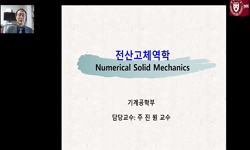Interest in modular buildings has surged recently, leading to their construction at increasing heights. However, seismic performance evaluations for modular connections remain insufficient. Based on Jang's (2019) experimental research, this study vali...
http://chineseinput.net/에서 pinyin(병음)방식으로 중국어를 변환할 수 있습니다.
변환된 중국어를 복사하여 사용하시면 됩니다.
- 中文 을 입력하시려면 zhongwen을 입력하시고 space를누르시면됩니다.
- 北京 을 입력하시려면 beijing을 입력하시고 space를 누르시면 됩니다.
https://www.riss.kr/link?id=A109446196
- 저자
- 발행기관
- 학술지명
- 권호사항
-
발행연도
2024
-
작성언어
Korean
-
주제어
모듈러 ; 브라켓 ; 유한요소해석 ; 전단강도 비 ; 판폭두께비 ; Modular ; Bracket ; Finite element analysis ; Shear strength ratio ; Width-thickness ratio
-
KDC
540
-
등재정보
KCI등재
-
자료형태
학술저널
-
수록면
203-210(8쪽)
- 제공처
-
0
상세조회 -
0
다운로드
부가정보
다국어 초록 (Multilingual Abstract)
Interest in modular buildings has surged recently, leading to their construction at increasing heights. However, seismic performance evaluations for modular connections remain insufficient. Based on Jang's (2019) experimental research, this study validates an analytical model and conducts parametric analyses on the shear strength ratio between the panel zone and beam, and the width-to-thickness ratio of the bracket. When the panel zone-to-beam shear strength ratio was 1.5 or higher, plastic hinge formation shifted from the panel zone to the beam. Consequently, a shear strength ratio between 1.5 and 2.0 is recommended. Analysis of the bracket’s width-to-thickness ratio revealed local buckling in models with non-compact sections, suggesting that brackets in modular connections be designed with compact sections or greater to enhance structural performance.
목차 (Table of Contents)
- Abstract
- 1. 서론
- 1.1 연구배경 및 목적
- 2. 선행 실험연구 요약
- 3. 해석 연구
- Abstract
- 1. 서론
- 1.1 연구배경 및 목적
- 2. 선행 실험연구 요약
- 3. 해석 연구
- 3.1 개요
- 3.2 유효성 검증
- 4. 변수 해석
- 4.1 패널존/보 전단강도 비 변수해석
- 4.2 패널존/보 전단강도 비 변수해석 결과
- 4.3 브라켓 판폭두께비 변수 해석
- 4.4 브라켓 판폭두께비 변수 해석 결과
- 5. 결론
- REFERENCES
동일학술지(권/호) 다른 논문
-
엄지말뚝 흙막이의 붕괴실태 분석을 통한 안전관리항목 도출 및 체크리스트 구성체계의 제안
- 대한건축학회지회연합회
- 김진호
- 2024
- KCI등재
-
부산광역시교육청 학교 공간재구조화의 교무실 실내공간 특성 연구
- 대한건축학회지회연합회
- 성이용
- 2024
- KCI등재
-
비수도권 중소도시 폐교부지 활용의 영향 요인 - 폐교부지의 입지특성과 부지특성을 중심으로 -
- 대한건축학회지회연합회
- 이윤서
- 2024
- KCI등재
-
근대 이후 모듈러 건식공법 주택의 디자인과 친환경적 특성에 관한 연구 - 모듈러 주택의 탄소 배출량에 대한 벽두께 변화를 중심으로 -
- 대한건축학회지회연합회
- 홍지완
- 2024
- KCI등재





 eArticle
eArticle






